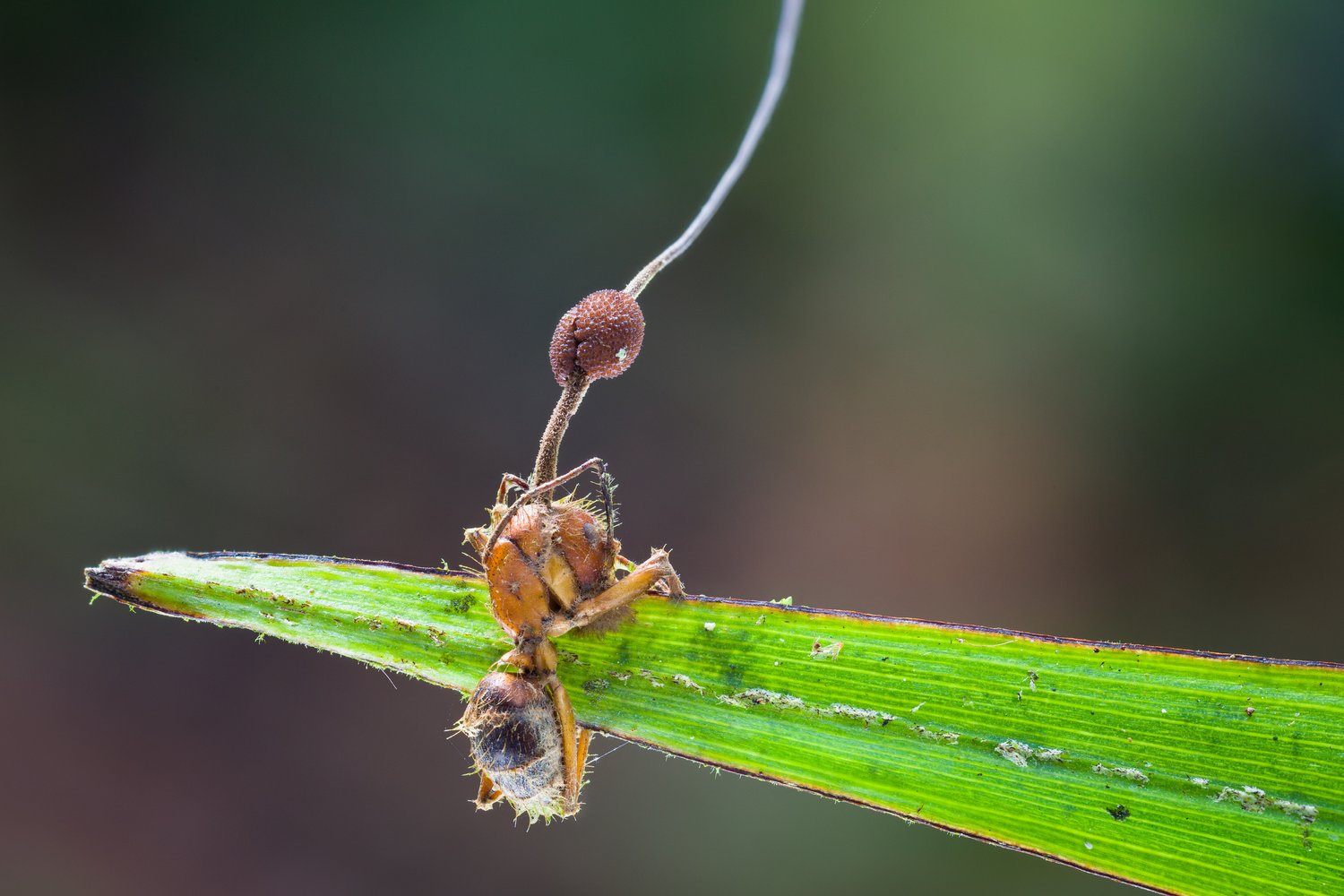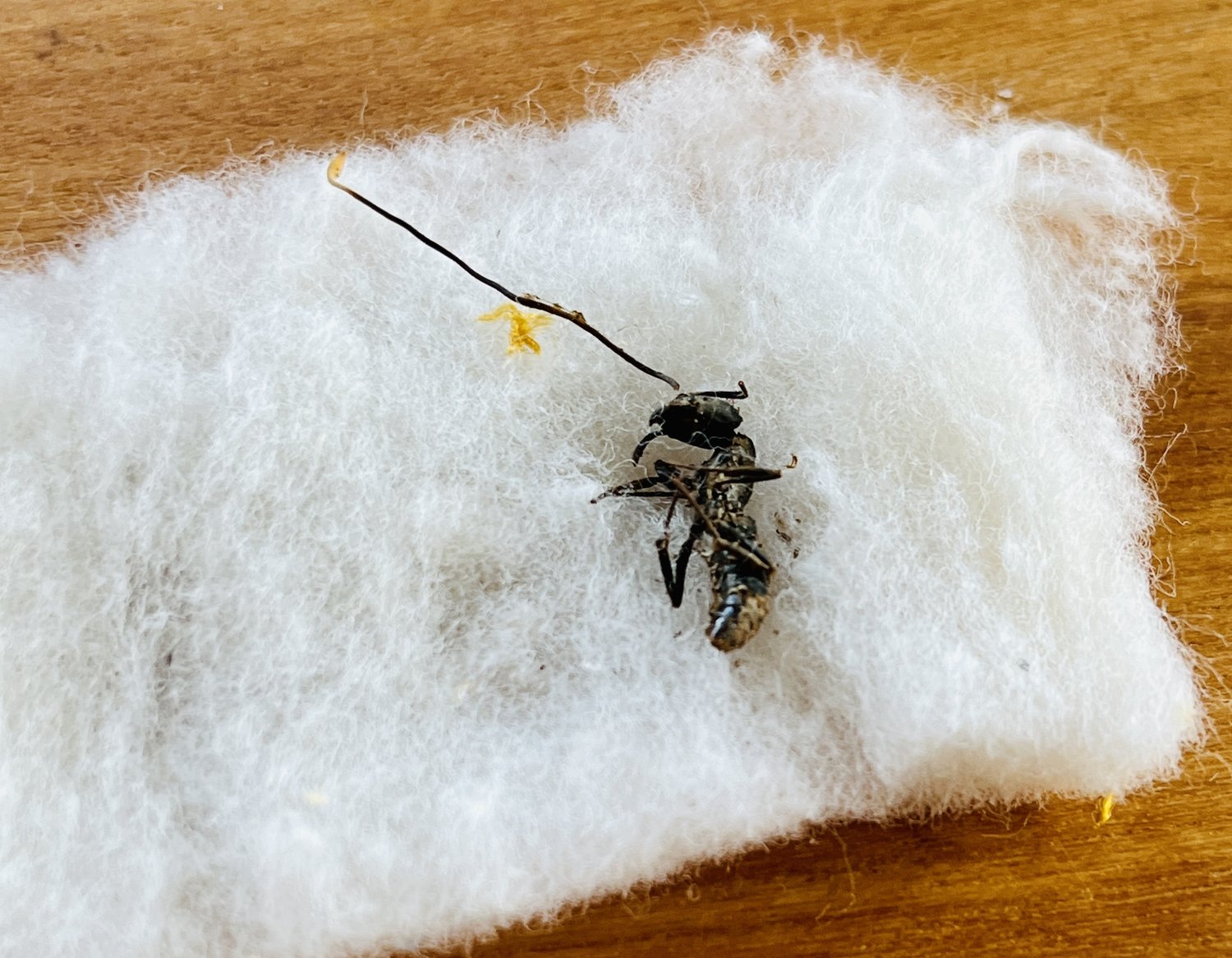"The Last of Us": Is there a real fungus that can take over the brain? Yes...at least among ants
May 09, 2023

Not your average zombie apocalypse. "The Last of Us" throws Ellie and Joel into a fight for survival against a mutated fungus. Credits: HBO.
The universally praised HBO TV show “The Last of Us” is a post-apocalyptic drama adapted from a popular video game that tells the story of Joel Miller (starred by Pedro Pascal) and 14-year-old Ellie (Bella Ramsey) as survivors of a pandemic fungal infection that turns humans into zombies. The first season revolves around the fact that Ellie is immune to the fungus, and Joel is on a mission to take her across a mushroom zombie-infected country so she can be tested and studied for a cure.
The fungus responsible for almost annihilating humankind in the TV show was inspired by a real life “zombie-ant fungus”. Ophiocordyceps, or Cordyceps for short, is found predominantly in tropical forests and primarily infects ants or other insects such as spiders. Once it infects an ant, Cordyceps starts growing and manipulating the animal’s behavior. It compels the ant to leave the nest and clamp to a leaf above the floor of the forest, just at the perfect height for maximizing the launching of fungal spores — that is exactly 25 centimeters from the ground, in case you are wondering. This master plan allows the fungus to disperse and infect a new army of ants.

Zombie fungus Ophiocordyceps on an ant at the edge of a leaf in Amazon rainforest in Colombia.
– Daniel Newman via Adobe Stock.
The real-life fungus signature could be a bit disappointing to “The Last of Us” fans. After growing inside the ant’s head, it bursts into a single long stalk, which is far different from the mushroom-like zombies in the show. Cordyceps is also an obligate parasite, which means it cannot survive outside a host’s body. Therefore, it cannot grow everywhere, as depicted in the show.
“No hate to the writers, but that doesn’t make any sense,” says Spenser Babb-Biernacki, a PhD student at the LSU Museum of Natural Science.

Spenser Babb-Biernacki, a PhD student at the LSU Museum of Natural Science, started her own YouTube channel to explain about fungi to the public.
Spenser is a mycologist who studies how fungi from the genus Pneumocystis that are ubiquitously found in the lungs of mammals, including humans, are evolving and speciating to infect different hosts. Spenser had so many feelings about the show that she started her own You Tube Channel to explain different types of fungi and their interaction with other organisms, pointing out where the show got it right and where it got it wrong.
“I love the show. I love that the show exists, that it’s popular and it’s getting people interested about fungi. But people deserve the opportunity to learn about what is realistic and what is not”, said Babb-Biernacki.
Now, how did an ant fungus get into controlling human bodies in the show? And could that really happen?
The premise of the show is that rising temperatures caused by climate change increased
Cordyceps’ tolerance to the high internal temperature of the human body, allowing
it to infect us. Dr. Laura Lagomarsino, Assistant Professor at the LSU College of Science — AND a fan of the show — says
this “spillover” storyline, where a pathogen infects a new host, is tantalizing to
the public because it is actually plausible. Is there anything scarier and more binge-worthy
than a reasonable zombie apocalypse? She explains that with climate change some pathogen
populations may become dominant over others, which increases the chances of transmission
to new hosts, including humans.
“We are already seeing the spread of infections to new species of plants, for example, in response to human activity and climate change. And let’s not forget about Swine fever, or even more recently, COVID,” says Dr. Lagomarsino, who is also Director of the Shirley C. Tucker Herbarium at LSU. The herbarium houses specimens of plants, lichens, and fungi, and has a single Cordyceps specimen that was collected while parasitizing an ant.

Cordyceps specimen housed at the Shirley C. Tucker Herbarium at LSU.
– Bianca Scolaro
Climate change is already expanding the environment of disease-causing fungi. According to the CDC, many fungal diseases may become more common including Candida aurisoutbreaks, which can cause invasive infections, including bloodstream infections and wound infections.
So, yes. Climate change may not only affect fungal interactions with plants but can also increase the chances of new fungal infections in humans. But a fungal takeover by Cordyceps? Not in a million years — literally.
Cordyceps is a highly specialized fungus that has evolved over millions of years to infect specific insects. The reason it got so specialized – to the point of controlling the host’s behavior – is because it cannot survive outside the host’s body, and therefore, needs a little help to reproduce and pass on its DNA (what in evolutionary biology is referred to as increasing their own fitness).
A host jump from insects to humans would require not only climate change but millions of years of evolutionary adaptations. “This is a way too simple explanation for a host jump coming from an obligatory parasite,” says Spenser.
In the show, Ellie asks Joel how the infection started, and he jokes that it must have come from a monkey. Joel explains that Cordyceps mutated and got into the food supply, most probably wheat. Ellie then replies that eating infected wheat makes more sense than an infection coming from a monkey.
“No, it doesn’t. It would actually make a little bit more sense if the fungus would first get adapted to a host more similar to humans like a monkey than jumping from insects to wheat, to infecting us”, explains Spenser.
If this jump would ever occur, a Cordyceps infection would most probably start as a skin infection or lung disease. Let’s not forget that humans have an immune system to protect against pathogens or foreign bodies. After jumping to humans, it would take another million years for Cordyceps to overcome our defenses and get specialized enough to be able to control our behavior.
Although humans are not nearly close to experiencing an evil fungus takeover, there are plenty of other fascinating examples already happening in the natural world. For example, the pathogenic fungus Batrachochytrium dendrobatidis has been suggested to modify male frogs’ mating call to make it more attractive to the females in order to spread the infection. This fungus has been blamed for the extinction of hundreds of amphibian species by destroying their skin, disrupting their immune systems, and causing heart failure. Another “body-controlling” fungus found in the wild is Microbotryum violaceum, which infects flowers and modifies their reproductive system to produce fungal spores instead of pollen. Spores are then dispersed by pollinators, like bees, to other flowers and therefore spreading the infection. For these obligate parasites, it’s all about reproduction.
The search for a cure
Spoiler alert! You might want to stop right here if you still haven’t watched the season 1 finale. .
.
The last episode of season one ends with a moral dilemma:
Should one individual be sacrificed in the search for a pandemic cure? And Joel’s answer to that is: nope!
Well, we’ll have to side with Joel in this one. Here’s why.
The last episode explained HOW Ellie got to be immune: her mother was bitten by a zombie just a few minutes – if not seconds – before giving birth to her. Fast-forward thirteen years, Joel and Ellie finally get to the medical facility where doctors have been researching for a vaccine or cure. Joel is then told that Cordyceps is probably growing inside Ellie’s head and that they need to sample her brain to develop a treatment — which would be a non-survival procedure. At that point, Joel had developed a father-daughter type relationship with Ellie (years after having lost his own daughter at the beginning of the pandemic) and decided he would not let them sacrifice her.
Now, would brain surgery be the first action doctors take in a hypothetical scenario like this? Probably not. With no imaging whatsoever, the idea that Ellie’s brain is the key to the cure is nothing but a guess. Since Ellie was apparently first infected right before being born, it would be reasonable to suggest that she was exposed to a very small dose of the fungus, low enough to get her immunized, similar to how a vaccine works. Simple blood work and follow-up experiments could be the answer, and that could also mean they not only didn’t have to sacrifice Ellie, they didn’t need her at all. Admittedly, that doesn’t make for a great plot. But, with the lack of data, Joel was smart to run away from bad science.